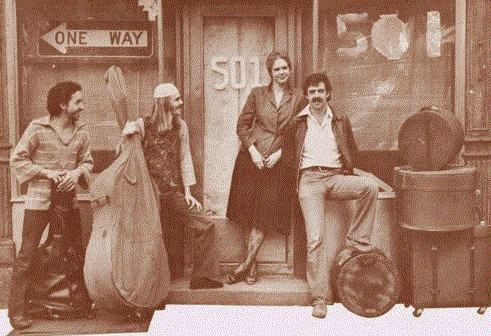The New York City Artists’ Collective, also known as Eclectic Arts, Inc., is a non-profit presenting organisation that aims to increase understanding and appreciation for the visual and performing arts through a wide platform of exposure through performance and exhibition events. It encourages its members to be independent and creative, taking full responsibility for their artistic development. The Collective provides unique visibility and facilities for artists, composers, dancers, performers, and other creative people. The Collective hosted a nine-month concert series that was produced by Ellen Christi and Tom Bruno in its early years (1974-1980). There were many artists who participated, including Ray Anderson, David Murray, Keshavan Masslak, Gene Ashton and William Parker. These concerts were held in the storefront at 501 Canal Street and offered an alternative space for performance. The Collective’s success allowed them to expand their repertoire and present concerts in more community-based venues. One example was the gallery in Soho, which belonged to Ornette Coleman. Under the name Artists House the Prince Street location became the venue for Coleman’s performances over the next few decades. There were also universities, churches and museums at the location (Sunrise Studios), and other community centers (Bronx Community Center and Machito). A core group of N.Y.C.A.C. members was established by 1976. Members were invited to perform in Northern Europe as part of the “Sounds of Life” touring series. N.Y.C. was founded because of the need to document these concerts. A.C. Records. The Collective was committed to public performance but also played an active role in documenting concert work. The N.Y.C.A.C. released “Sounds of Life”, “And You Ain’t Ready for this One Either” (1979), and “New York City Artists’ Collective Plays Butch Morris (1984). Record label. These recordings provided an additional medium for the Collective to share its music with the public. These alternative performances spaces of the late seventies captured Manhattan’s loft era, which was a special time when the artist lived in and developed decrepit areas in Manhattan such as Soho, Tribeca and the Lower East Side. New York would not exist today without the pioneering that took place in various parts of the city. All of these artists’ creative visions paved the way for greater economic success in these areas that were later to become their downfall. Our city experienced a period of remarkable artistic awakening in the late seventies and early eighties, which attracted international tourists as well as emerging artists from other countries. from http://eclecticarts.org
